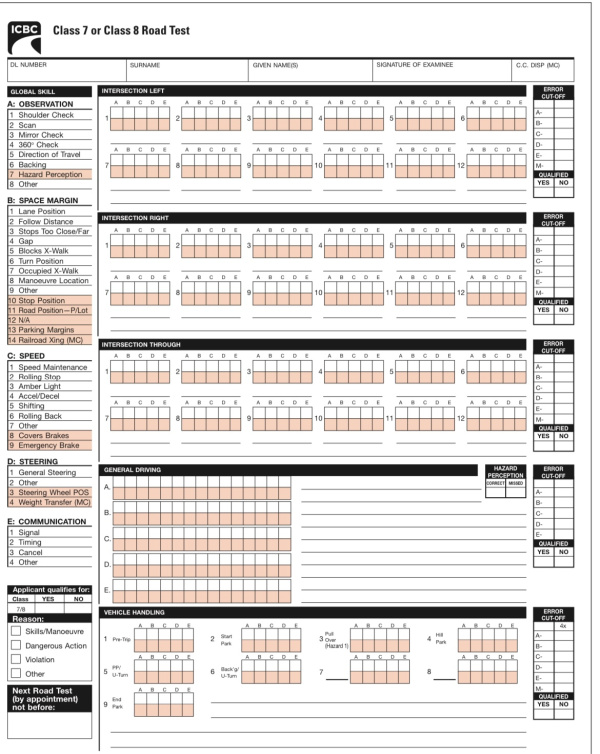When it comes to marking sheets for road tests, they can be hard to understand by the general public, especially if the test was unsuccessful. After an unsuccessful road test, new drivers are likely to only hear why they failed, and are not necessarily going to hear or understand what the examiner has to say regarding the reasons for not making it through successfully.
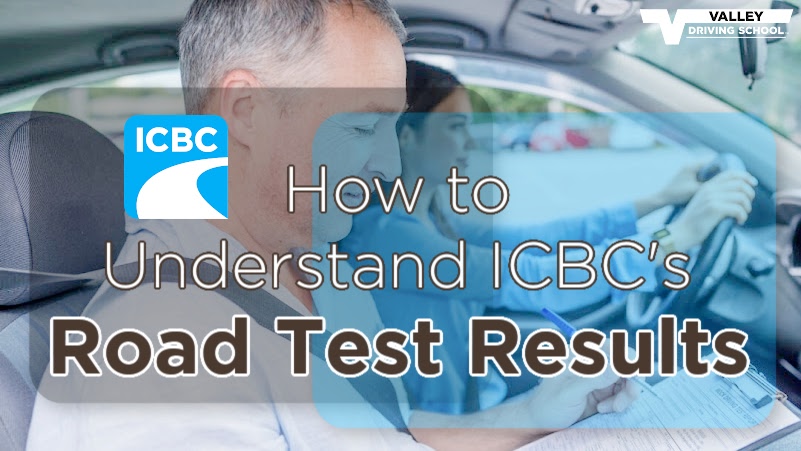
Examiners Marking Sheet
There is a lot going on with this sheet, which makes it completely understandable that it would be daunting to read and understand the results! We've broken down the examiners marking sheet, and included some images afterwards for examples of everything we've discussed. The marking sheet will have any mistakes recorded, and they are split into different sections: left turns, right turns, straight throughs, general driving and, for class 7 road tests, vehicle handling. Each one of the noted sections must be passed in order to have a successful road test.
In each section there are numbers and letters designated for each time a maneuver is completed. For example, in the left turn section, the “1” box indicates the first time a left turn was completed, the “2” indicates the second time a left turn was completed, and so on for the other numbered boxes. The letters attached to each instance of a maneuver indicate the global skills that are used, which are found on the far left of the marking sheet. Each box allows for the examiner to mark down a mistake that correlates to these global skills. There are both white and coloured boxes - the white boxes are for mistakes worth a full mark, while the coloured boxes are for mistakes worth a half mark. This applies to the list of global skills. For example, a stop position mistake under space margins is worth half a mark, whereas a turn position mistake is worth a full mark. ICBC determines which maneuvers will be worth a full mark or a half mark.
The error cut-off, which is found on the far right of the marking sheet, indicates how many mistakes can be made within that section. If the error cut-off notes that three mistakes are allowed, this means it must be the same mark for every mistake. Three missed shoulder checks in one section would result in a fail, but two missed shoulder checks and a missed full-stop in one section would not. If there are two mistakes in the same box, the examiner will circle the box and it is considered a “blown maneuver”. If there are three “blown maneuvers” and the error cut-off for the same section is three, this would result in a failed road test.
Every ICBC office has multiple routes and each one has different error cut-offs. For example, a route with ten right turns may allow for three mistakes, whereas a route with fifteen right turns may allow for four mistakes. The examiner will write in the mistake allowance before the road test begins, based on the route, however this information is not shared with the customer testing until after the road test has been completed and they are shown the completed sheet.
After a road test is completed the examiner keeps this sheet, but the testee is allowed to ask for a copy and we recommend taking a picture as well. If drivers were unsuccessful with their road test, this marking sheet will come in handy for improving driving skills and preparing for the next road test attempt.
A driving school Instructor will be able to explain any of the markings in better detail, rather than a driver just looking at the marking sheet that the examiner provides. When marking a class 5 road test, examiners do not use the vehicle handling section at the bottom of the sheet. For a class 7 road test, the bottom section will be used to do maneuvers such as uphill/downhill parking, cul-de-sac, and parallel parking.
The second page has diagrams and intersections. The examiner may use this section to get the student to better understand mistakes they may have made.
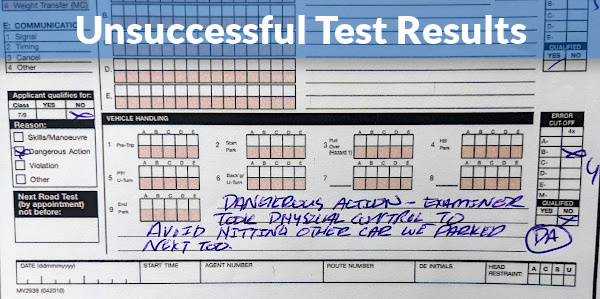
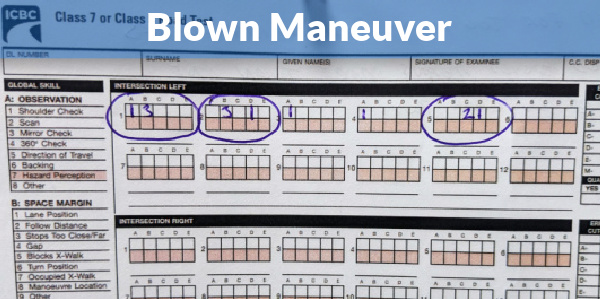
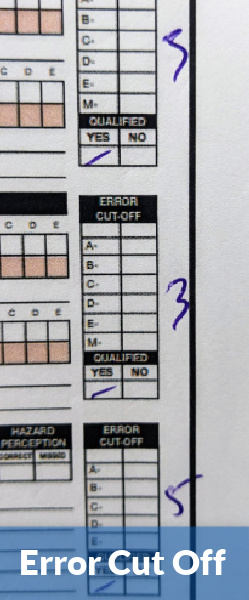
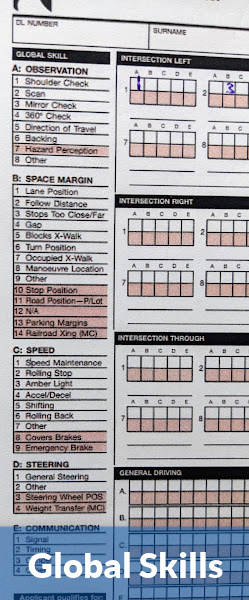
Road Test Results Sheet
ICBC has recently changed the road test marking sheet to be easier to understand than it used to be - this isn’t your parent’s marking sheet! The sheets used previously often caused some confusion for new drivers and their guardians, which resulted in complaints and upset and confused customers. The road test results sheet is given to students after the road test is completed. It simplifies the results and the mistakes that were made. It shows what class of licence the test is for, the results, any test feedback, the next eligible date for testing if another test is needed, and a short debrief. This example is a clean sheet, meaning no mistakes were made!
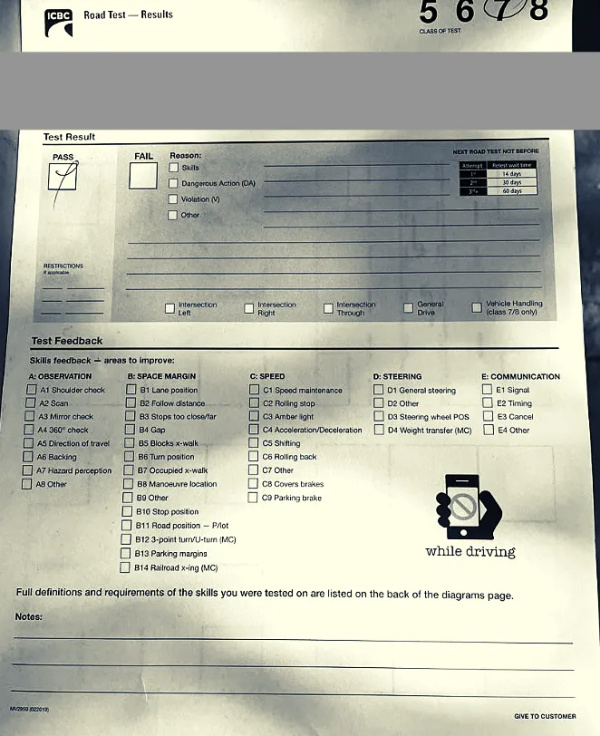
The results sheet is a simplified version of the marking sheet, although it may be a bit vague. If a student is not successful the reasons will be in the Test Results section. It could be related to skills (shoulder checks, scans, 360° check, etc.), dangerous actions (examiner physically or verbally taking control), violations (speeding, missing stop signs, etc.), or other (driving over and onto the curb). The sheet also indicates the sections that mistakes, if any, were made in: left turns, right turns, intersection throughs, general drive and, for class 7 road tests, vehicle handling.
The Test Feedback section notes any areas that could be improved. The criteria is split into the five global skills that are used for defensive and safe driving; observations, space margins, speed, steering, and communication. If a box is checked in any of the sub sections, that means that mistake had to have happened at least twice. One example is if the A1 box is marked, this means at least two shoulder checks were missed or very late. Another example is if the B3 box is marked, the testee stopped too close or too far from other cars at least twice.
This sheet will also indicate when testees can attempt the road test again. After the first road test attempt, drivers will need to wait 14 days before going again. After the second attempt, drivers will need to wait 30 days before going again. After the third attempt, drivers will need to wait 60 days before going again.
The back of the road tests results sheet will have definitions for all the marks made on the examiners marking sheet. There is also a notes section on this sheet where the examiner may leave comments on things the driver can improve upon, or they may even leave compliments on some of the driving skills!
–
The day of the ICBC road test can be stressful, and having to decipher road test results just adds to the feeling. If it still seems like gibberish, bring the road test results to an Instructor and they’ll be able to explain it in clear terms. If you don’t have an Instructor already, having a single lesson for translating road test results and polishing up the skills that you missed can be of great help!

